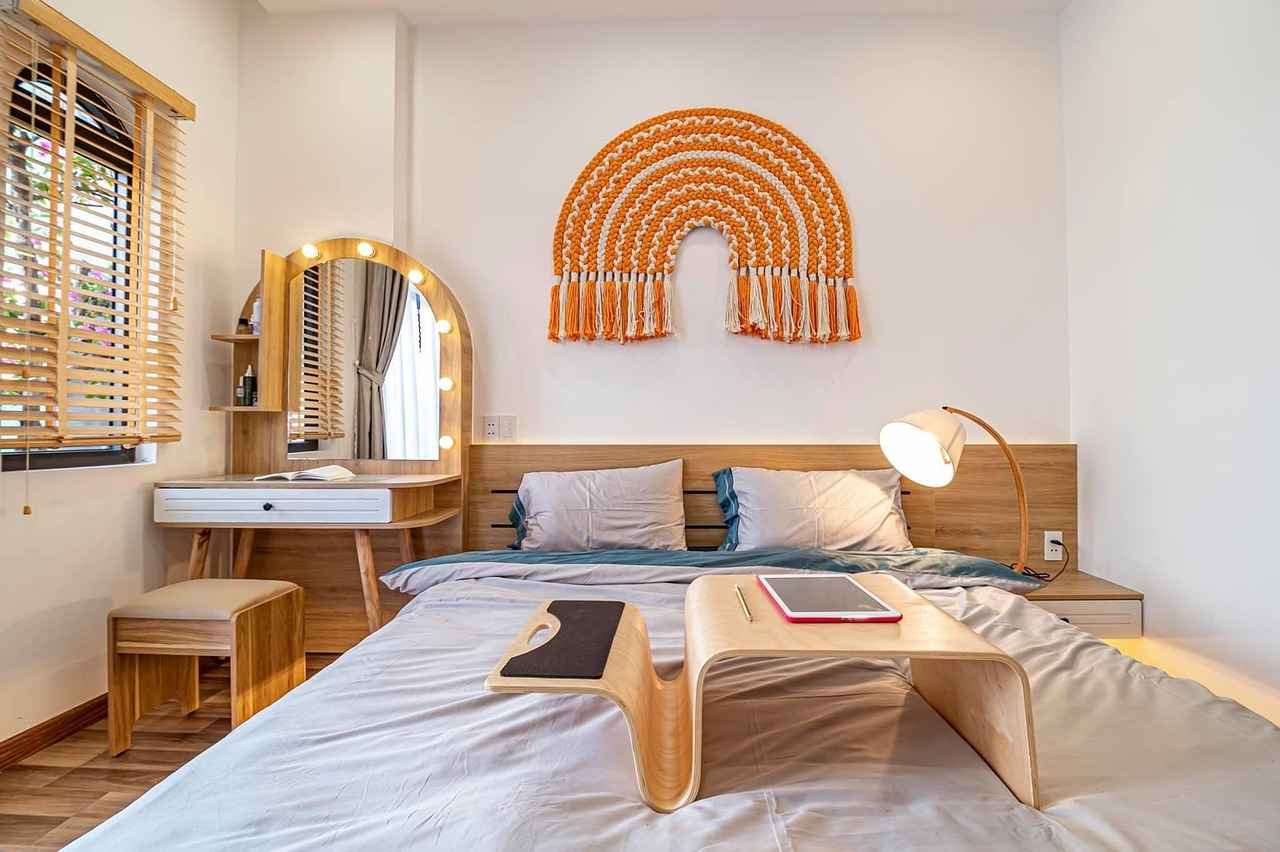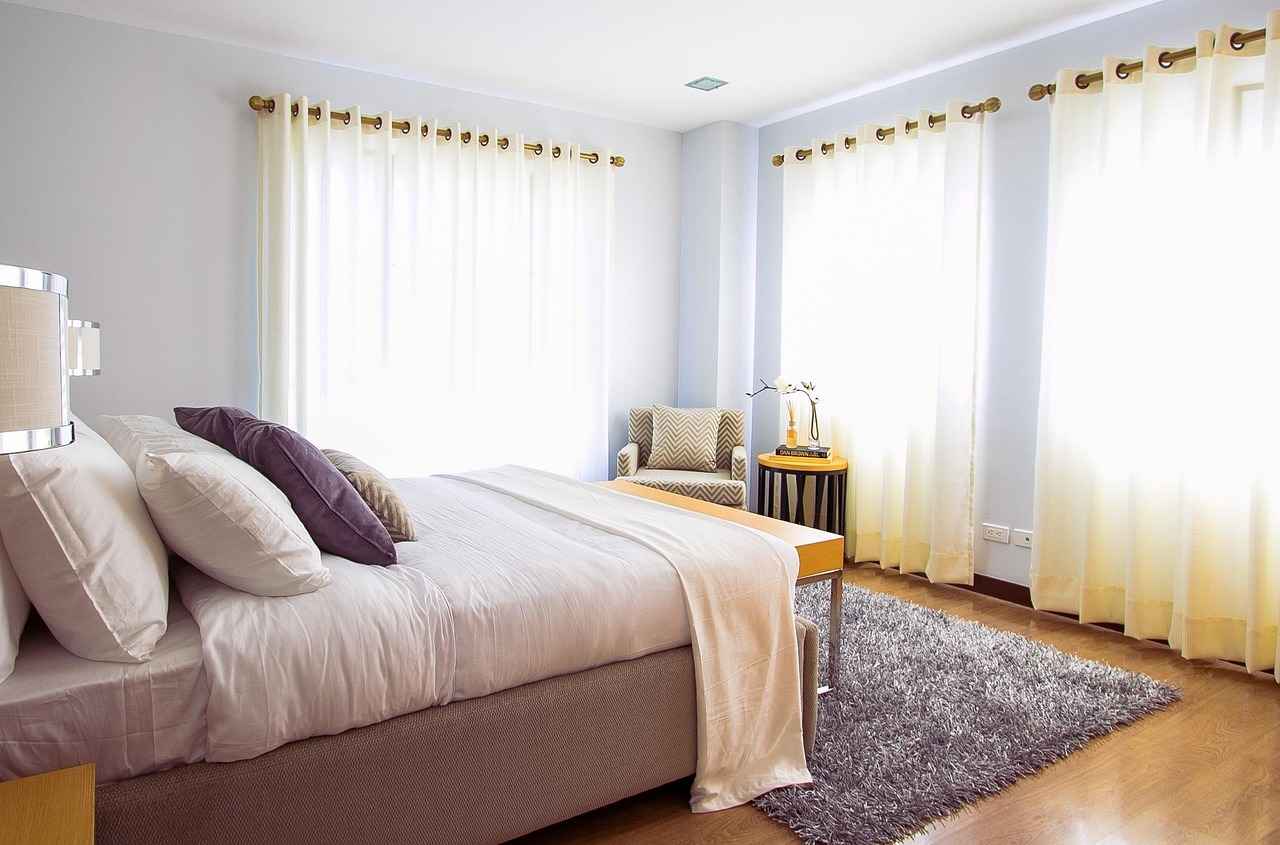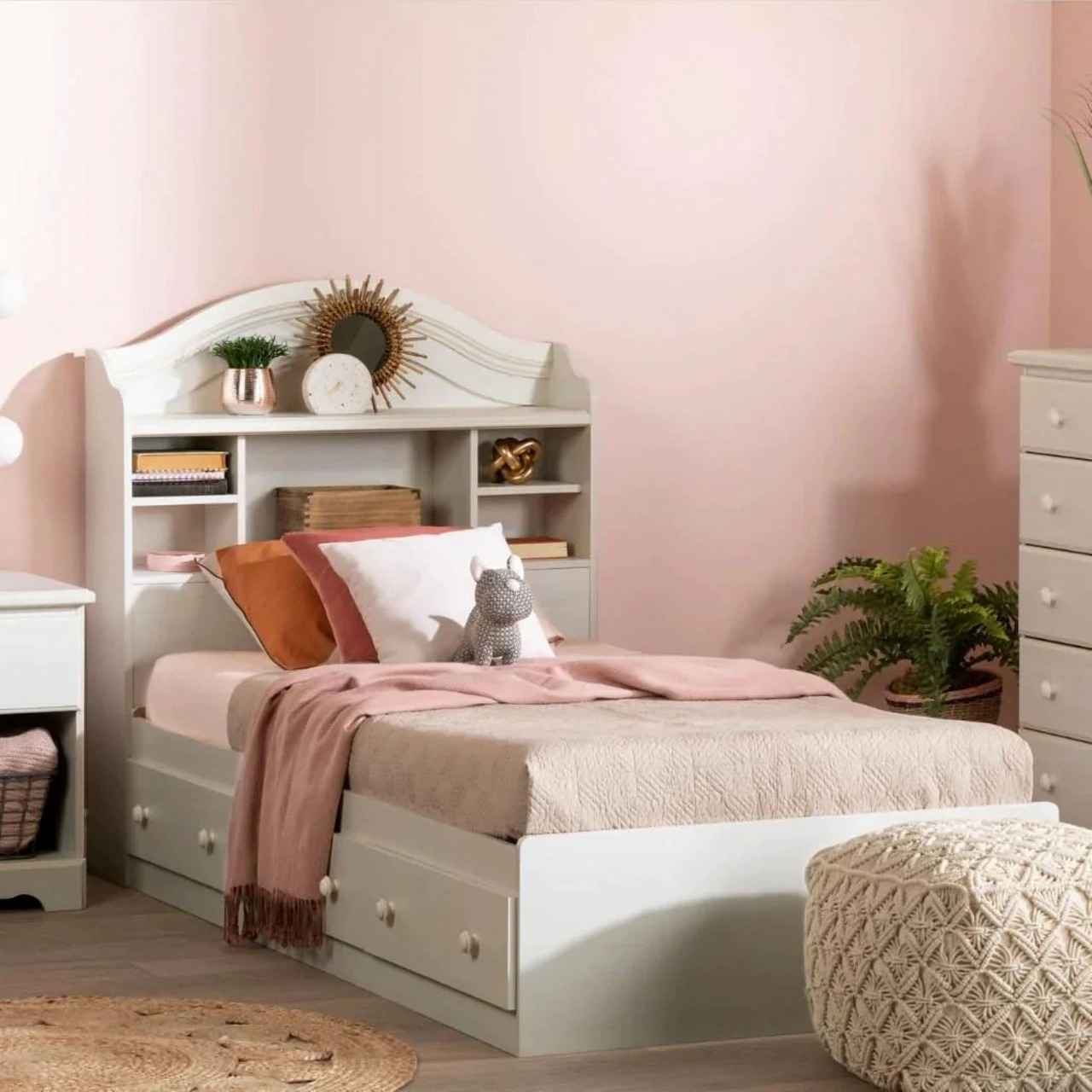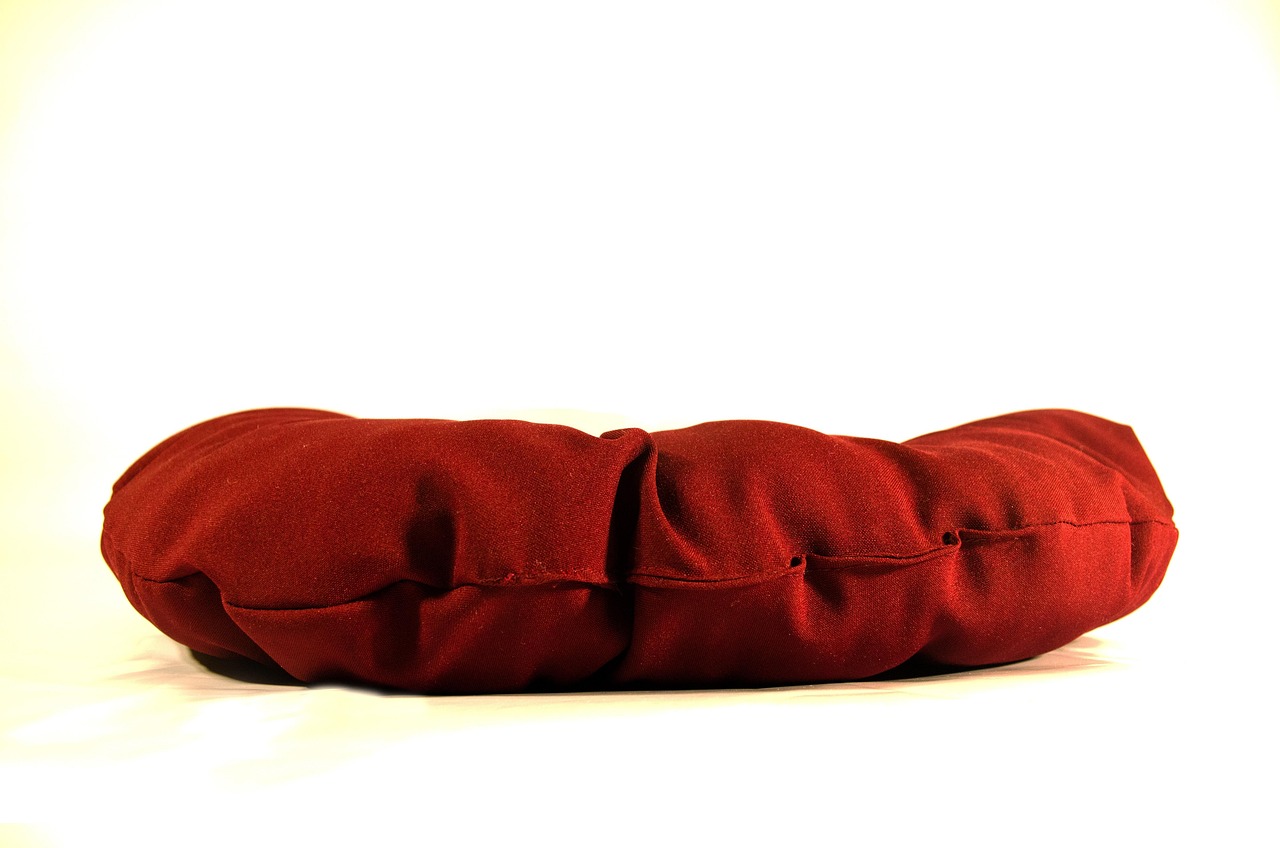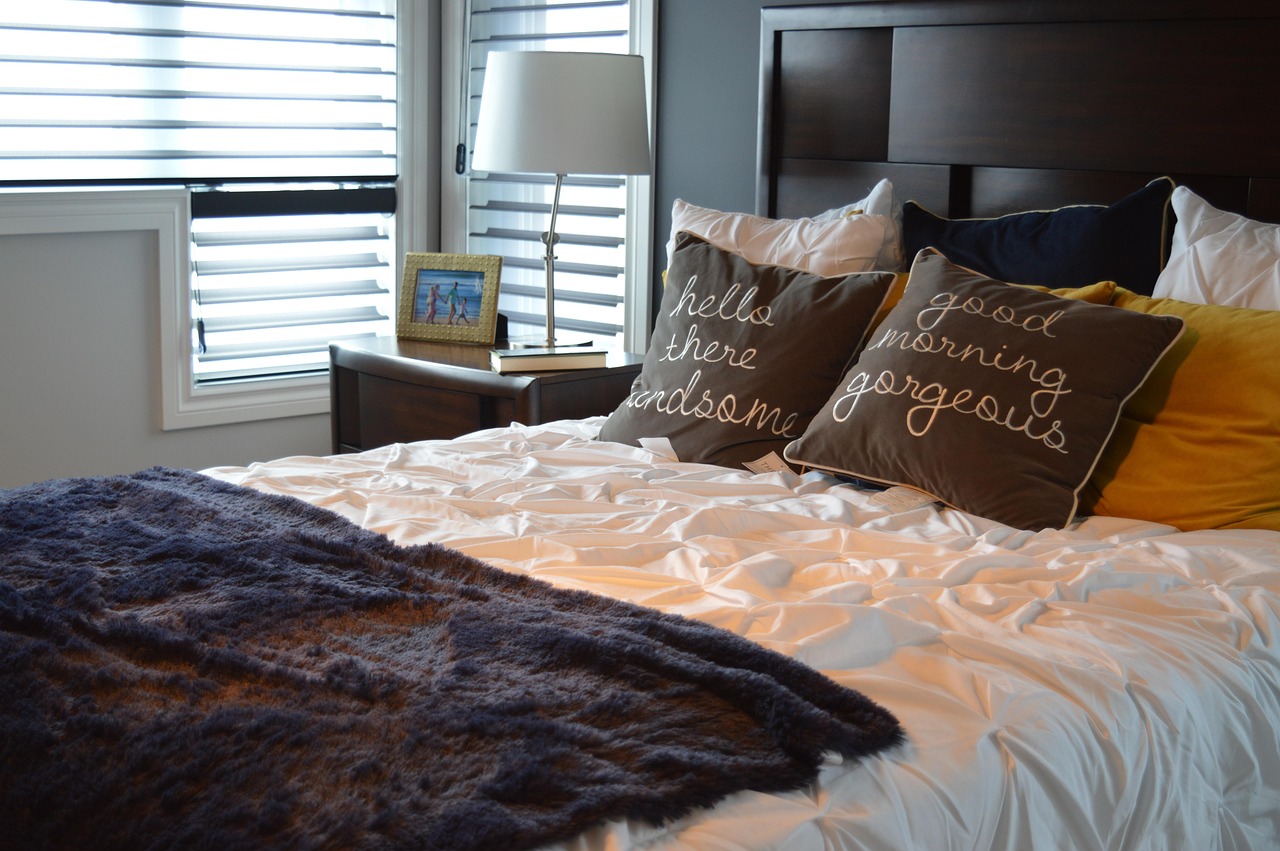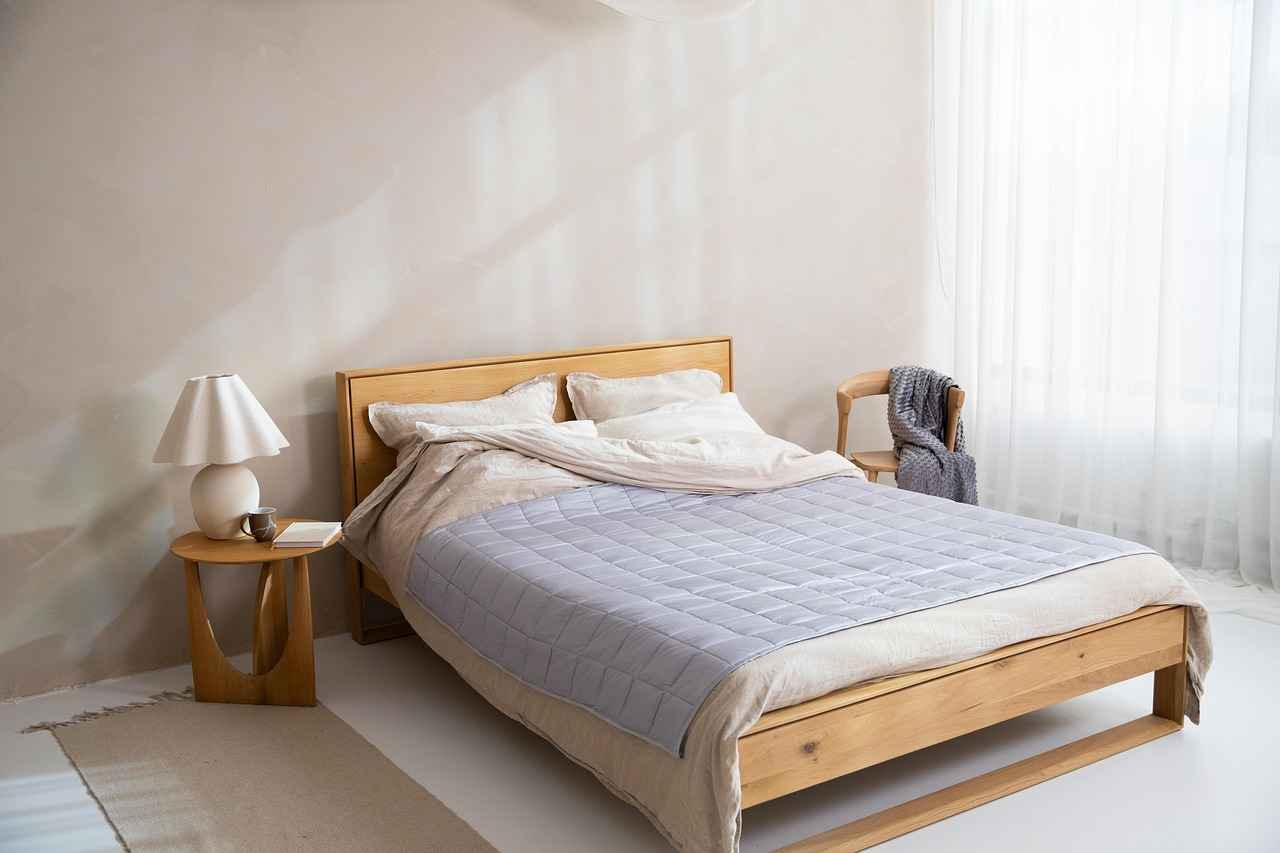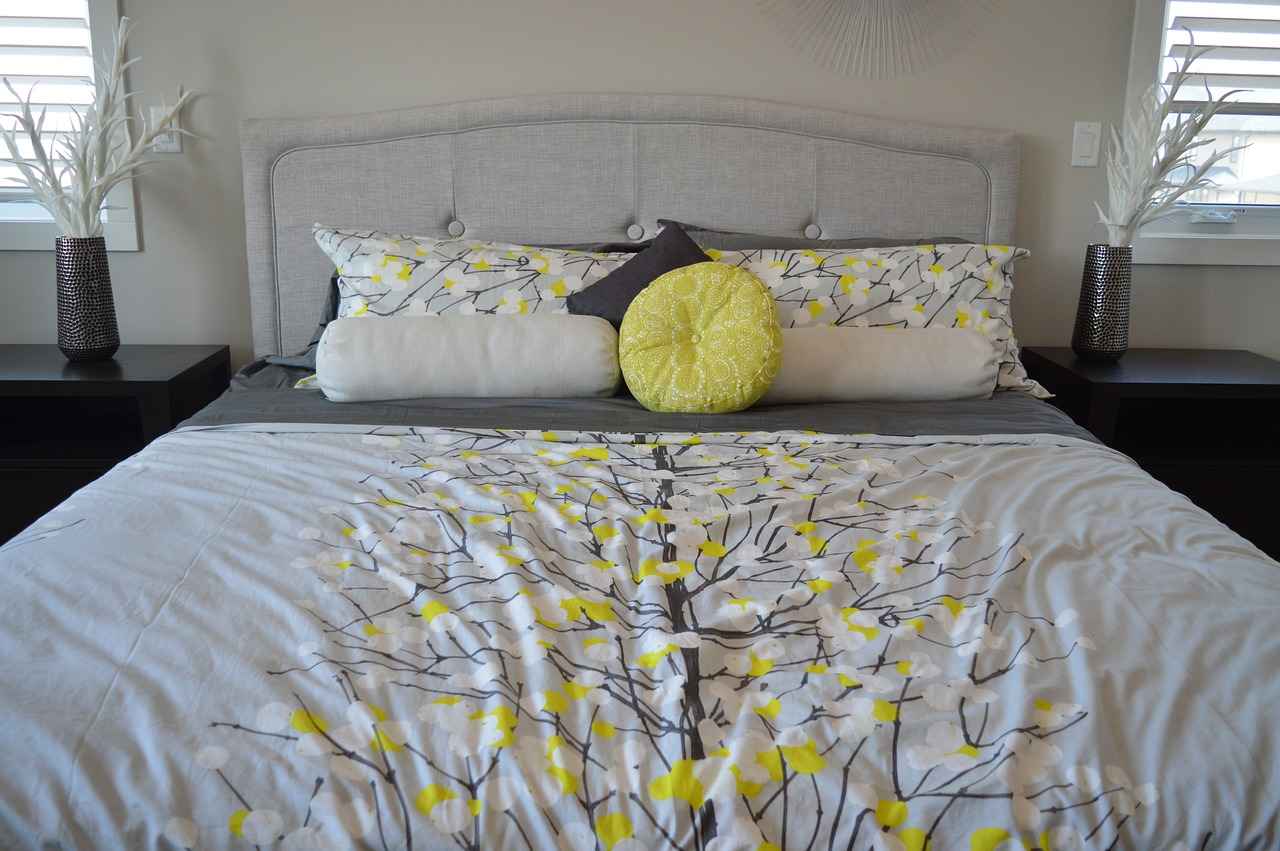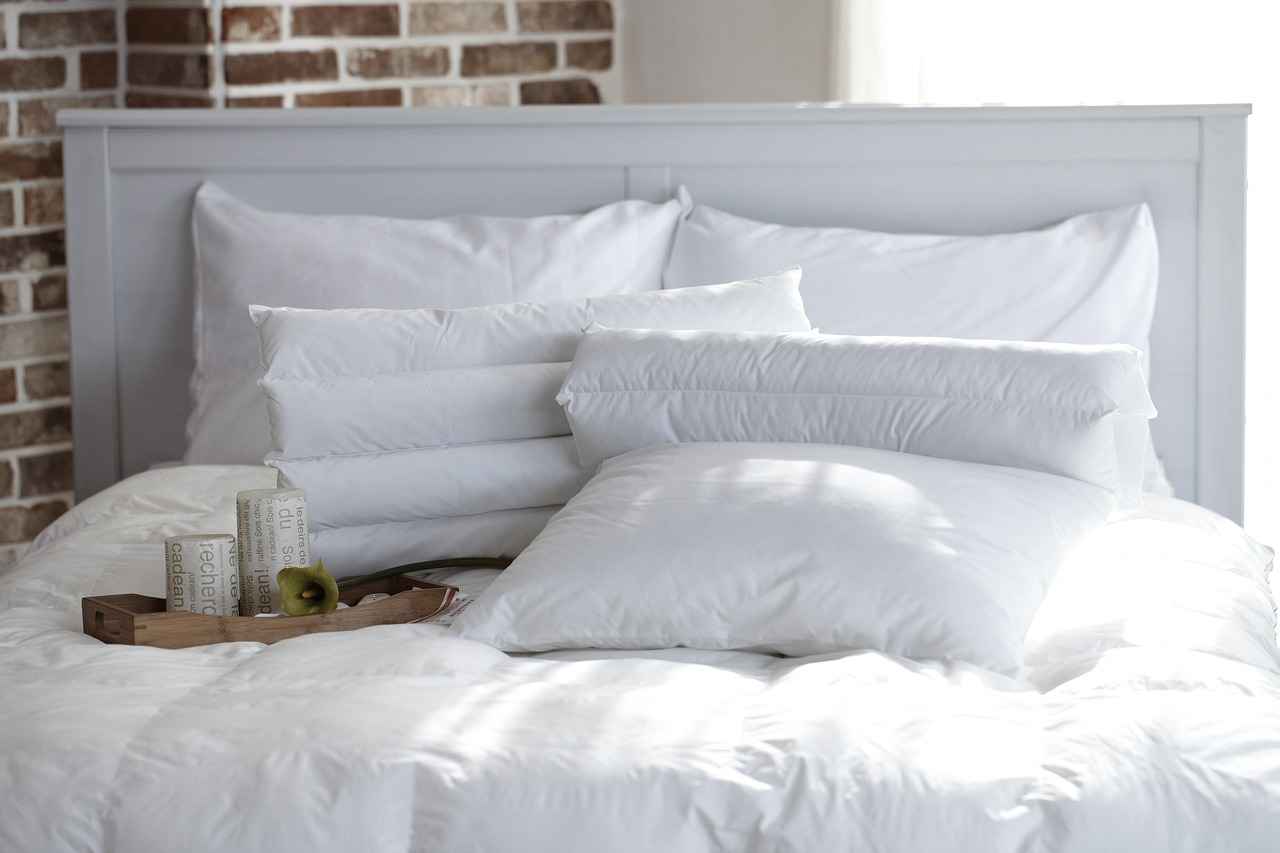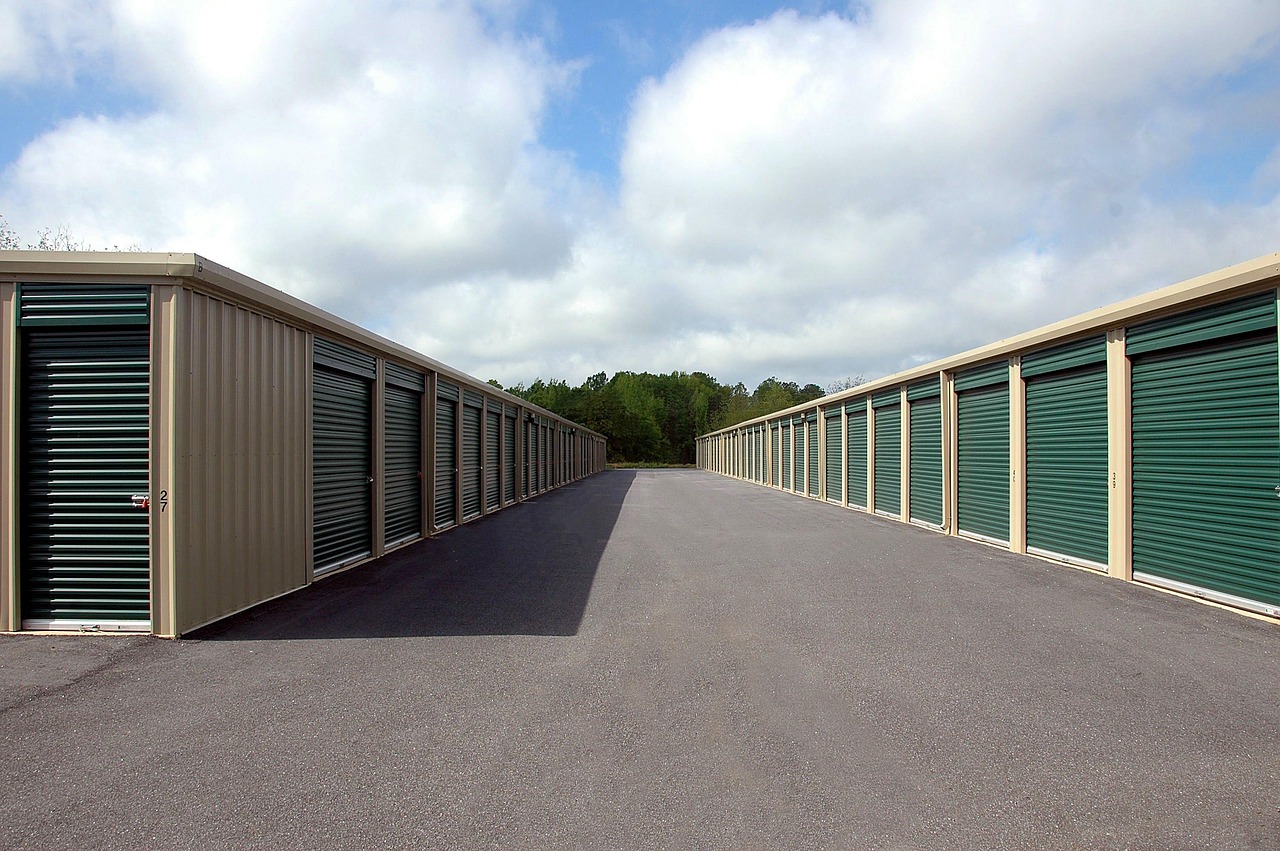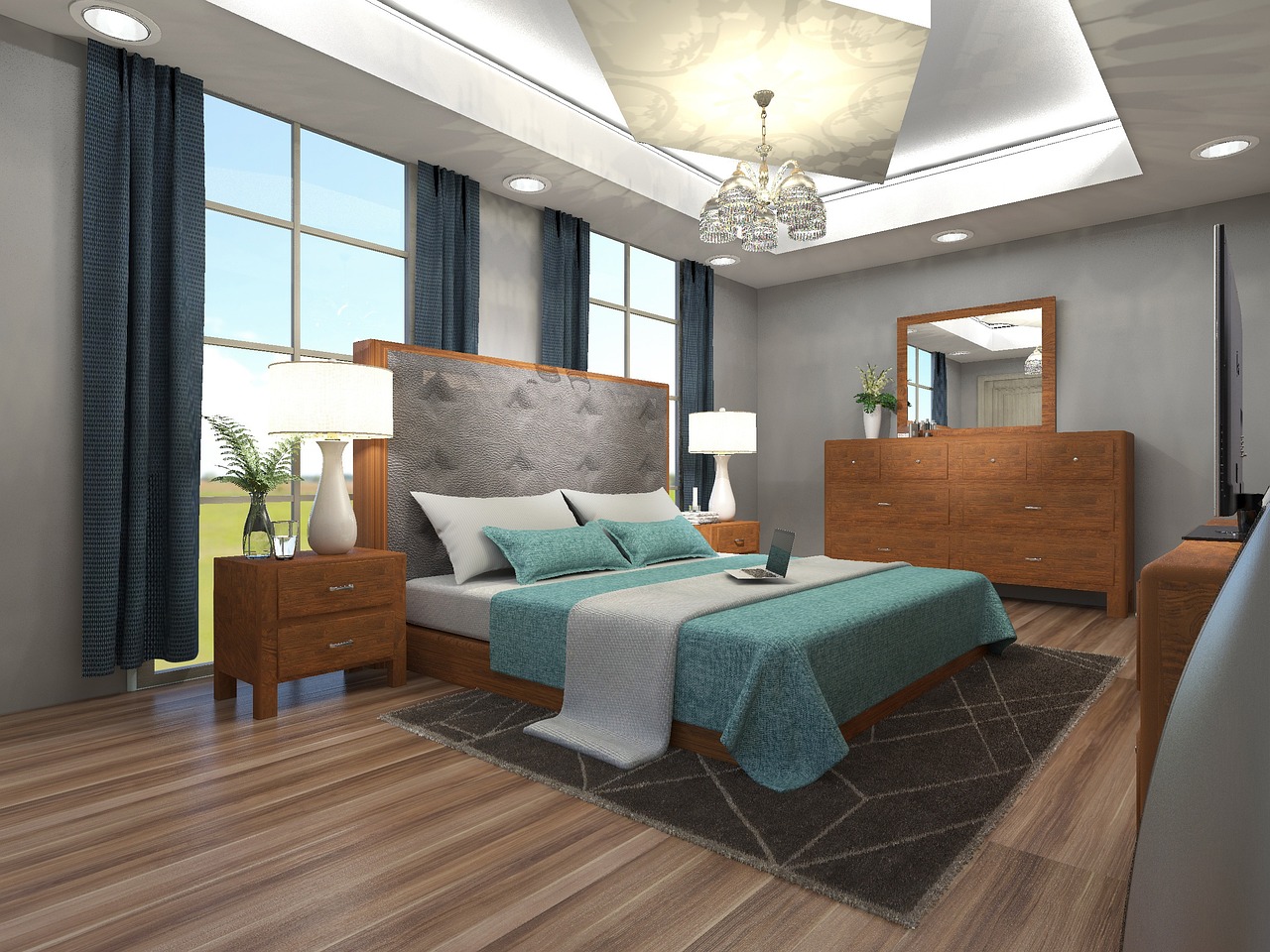As we approach 2025, the world of bed design is set to experience a remarkable transformation. This year, we will see an emphasis on modern aesthetics, enhanced functionality, and the introduction of innovative materials that cater to contemporary lifestyles. The trends are not just about style; they reflect a deeper understanding of what makes a bedroom a sanctuary in our busy lives.
Minimalist Bed Designs
Minimalism remains a prominent trend in 2025, characterized by clean lines and simple forms. This approach promotes a sense of tranquility in the bedroom, allowing individuals to unwind after a hectic day. The focus is on creating a serene environment that encourages relaxation and mindfulness.
Sustainable Materials in Bed Design
With an increasing awareness of environmental issues, sustainable materials are becoming essential in bed design. Consumers are now looking for eco-friendly options that do not compromise on style or comfort. This trend includes:
- Recycled Wood Bed Frames: These frames offer durability and unique character while reducing environmental impact.
- Bamboo as a Bed Material: Bamboo is gaining popularity due to its rapid renewability and natural aesthetic.
Smart Bed Technology
The integration of smart technology into bed design is revolutionizing how we sleep. Features such as adjustable bed frames allow users to customize their sleeping positions, enhancing comfort and support. Additionally, smart sleep trackers embedded in beds help monitor sleep patterns, providing insights to improve sleep quality.
Textured Fabrics and Upholstery
In 2025, textured fabrics are emerging as a key trend in bed design. Fabrics like velvet and linen add visual interest and comfort, allowing for personalization in the bedroom. Layering different textures can create a rich, inviting atmosphere, enabling homeowners to express their personal style while maintaining a cohesive look.
Bold Color Palettes
This year, bold color palettes are making a statement in bed design, moving away from neutral tones to embrace vibrant hues. Incorporating accent colors in bed frames can serve as a focal point in the bedroom, while mixing patterns and colors in bedding adds a dynamic element to the space.
Multi-Functional Beds
With the rise of urban living, multi-functional beds are becoming essential. These designs cater to smaller spaces with features that maximize functionality without sacrificing style. Options include:
- Storage Solutions in Bed Design: Beds with built-in storage provide practical benefits, keeping the bedroom organized.
- Convertible Bed Designs: Sofa beds or Murphy beds allow for versatile use of space, making them ideal for compact living areas.
As we explore these trends in bed design for 2025, it is clear that the focus is on creating spaces that are not only visually appealing but also functional and sustainable. The modern bedroom is evolving into a sanctuary that reflects personal style while meeting practical needs.
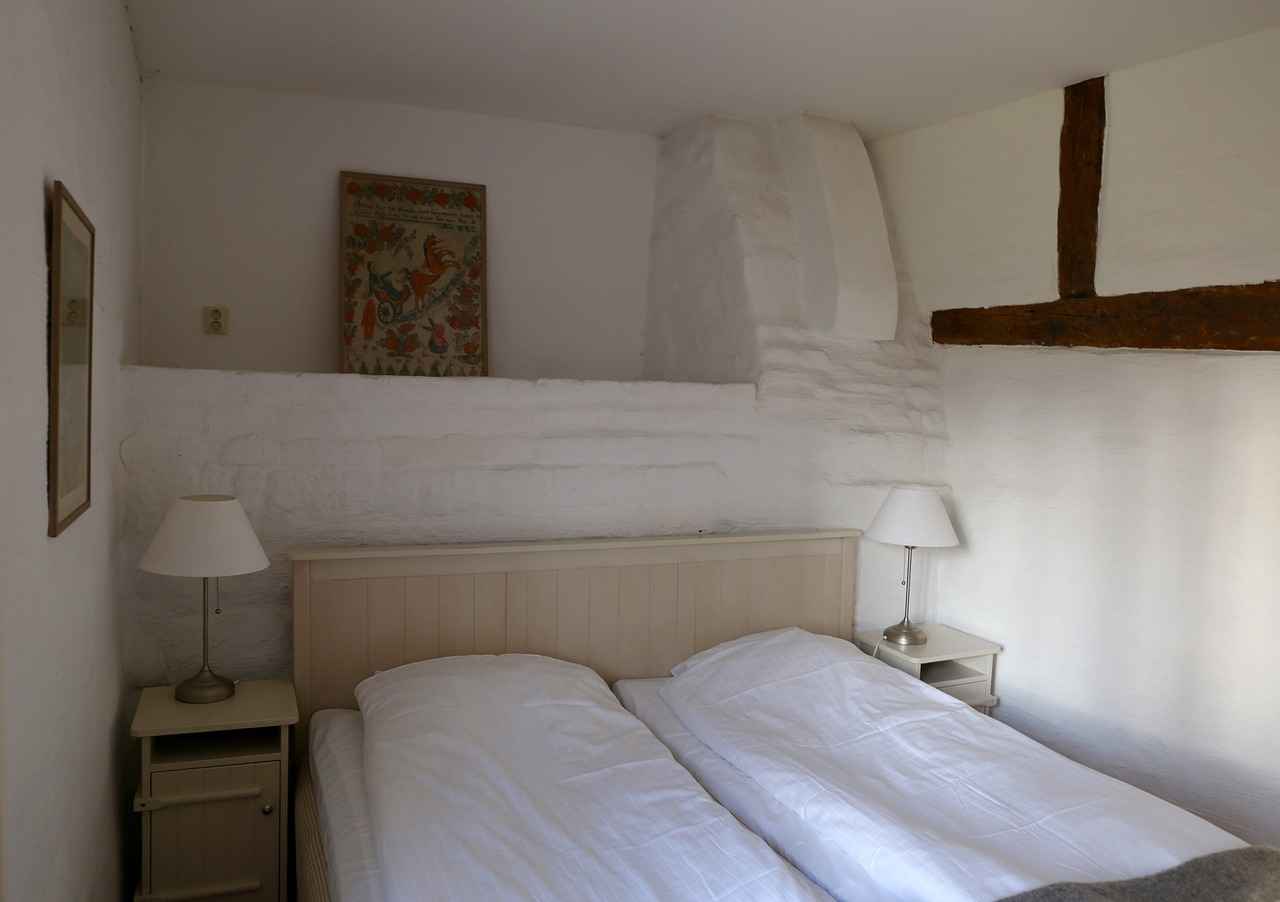
Minimalist Bed Designs
As we step into 2025, the world of interior design continues to evolve, with a strong emphasis on minimalism in bed design. This trend not only reflects a shift towards simplicity but also aligns with the growing desire for a peaceful and serene bedroom environment. Minimalist bed designs are characterized by their clean lines, simple forms, and a clutter-free aesthetic that fosters tranquility.
Minimalism in bed design is not merely about aesthetics; it embodies a lifestyle choice that promotes mindfulness and well-being. By eliminating unnecessary elements, minimalist beds create a calming atmosphere that encourages relaxation and restful sleep. The essence of this design philosophy lies in the belief that less is more, allowing individuals to focus on what truly matters—comfort and quality.
In 2025, we see a variety of minimalist bed designs that cater to different tastes while maintaining the core principles of simplicity. Here are some key features:
- Low-Profile Designs: Beds with a low profile not only enhance the sense of space in a room but also provide a modern touch that complements various decor styles.
- Neutral Color Palettes: Soft, muted colors such as whites, greys, and beiges dominate the minimalist aesthetic, creating a soothing backdrop that promotes relaxation.
- Natural Materials: The use of natural materials like wood and cotton adds warmth and texture to the design, making it inviting while still adhering to minimalist principles.
Moreover, the integration of smart technology into minimalist bed designs is gaining traction. Features such as adjustable bases and integrated sleep tracking systems enhance comfort without compromising the sleek, uncluttered look that minimalism champions. This fusion of technology and design not only caters to modern lifestyles but also enhances the overall sleeping experience.
One of the standout aspects of minimalist bed designs is their ability to adapt to various room sizes and layouts. In smaller spaces, these beds can transform a room by providing a sense of openness and airiness. For instance, a simple platform bed with built-in storage can serve dual purposes, maximizing functionality without overwhelming the space.
Additionally, the minimalist approach encourages thoughtful curation of bedroom decor. With fewer elements to distract, homeowners can invest in high-quality bedding and accessories that reflect their personal style. This focus on quality over quantity not only elevates the overall aesthetic but also contributes to a more sustainable lifestyle, as individuals are encouraged to choose items that are durable and timeless.
As we look forward to 2025, the trend of minimalist bed designs shows no signs of waning. With their emphasis on simplicity, functionality, and tranquility, these beds are perfect for those seeking a serene retreat from the chaos of daily life. Embracing this design philosophy can lead to a more organized and peaceful living space, ultimately enhancing the quality of life.
In summary, minimalist bed designs for 2025 are a harmonious blend of style and functionality. They reflect a broader trend towards simplicity and mindfulness, making them an ideal choice for modern bedrooms. Whether you are redesigning your space or simply looking for a new bed, embracing minimalism can lead to a more serene and fulfilling living environment.
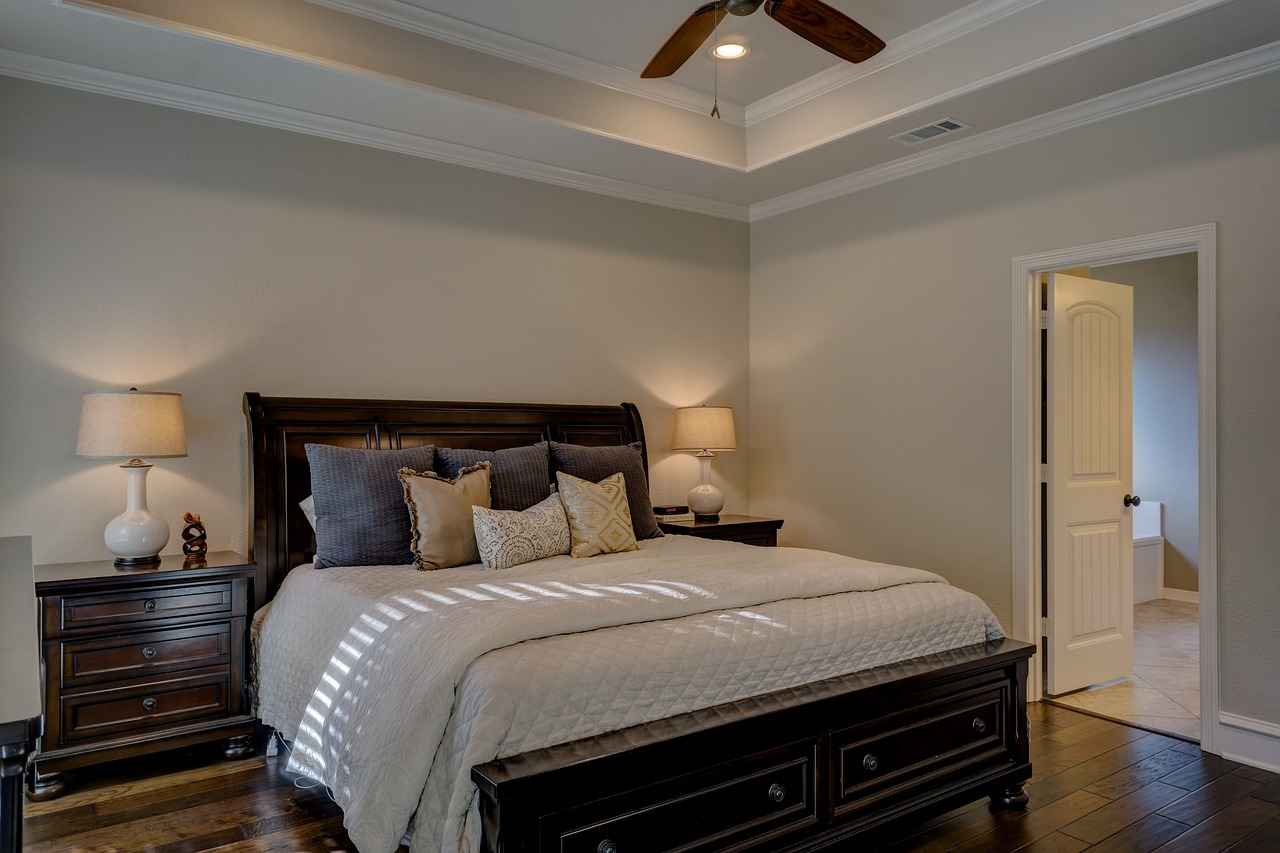
Sustainable Materials in Bed Design
As the world increasingly embraces eco-consciousness, the bed design industry is witnessing a remarkable transformation. The use of sustainable materials is on the rise, showcasing options that are not only environmentally friendly but also stylish and comfortable. This shift reflects a growing awareness of the impact our choices have on the planet, leading to innovative designs that marry aesthetics with sustainability.
In 2025, sustainable materials in bed design include a variety of options that cater to the environmentally conscious consumer. These materials are often sourced responsibly, ensuring that their production does not deplete natural resources or harm ecosystems. Below are some of the most popular sustainable materials making waves in the industry:
- Recycled Wood: Bed frames made from recycled wood are gaining popularity due to their durability and unique character. Not only do they provide a rustic charm, but they also significantly reduce the environmental impact associated with traditional wood sourcing.
- Bamboo: Known for its rapid renewability, bamboo is an excellent choice for eco-friendly bed designs. Its natural aesthetic and strength make it a preferred material for modern beds that prioritize sustainability without sacrificing style.
- Organic Cotton: Bedding made from organic cotton is free from harmful chemicals and pesticides, making it a healthier choice for both consumers and the environment. This fabric is soft, breathable, and durable, ensuring comfort while promoting sustainable farming practices.
- Hemp: Another sustainable fabric, hemp is known for its strength and longevity. It requires minimal water and no pesticides, making it a highly sustainable option for bed linens and upholstery.
Choosing sustainable materials for bed design offers numerous benefits:
1. Environmental Impact: Reduces deforestation and pollution.2. Healthier Living Spaces: Non-toxic materials contribute to better indoor air quality.3. Unique Aesthetic: Sustainable materials often have distinctive textures and finishes that enhance the overall design.4. Long-Term Durability: Many sustainable materials are designed to last, reducing the need for frequent replacements.
As designers continue to explore sustainable options, innovative trends are emerging. For instance, modular bed designs allow for easy customization and adaptability, promoting a circular economy by enabling consumers to replace only parts of the bed rather than the entire unit. Additionally, beds featuring upholstered headboards made from recycled materials are becoming increasingly popular, offering both comfort and a commitment to sustainability.
In addition to the materials used, the finishes applied to beds play a crucial role in their sustainability. Opting for non-toxic, eco-friendly finishes ensures that harmful chemicals are not released into the home environment. This aligns with the growing trend of wellness in home design, where creating a healthy living space is paramount.
As consumers become more educated about the implications of their purchases, the demand for sustainable bed designs is likely to continue growing. Shoppers are increasingly looking for certifications and labels that indicate a product’s sustainability credentials. This shift not only benefits the environment but also encourages manufacturers to innovate and improve their practices.
In conclusion, the rise of sustainable materials in bed design represents a significant shift towards eco-conscious living. With a variety of options available that do not compromise on style or comfort, consumers can make informed choices that reflect their values. As we move forward, the integration of sustainability into bed design will likely become a standard expectation rather than a niche market.
Recycled Wood Bed Frames
In recent years, the trend of incorporating recycled wood into bed frames has gained significant traction among environmentally conscious consumers. This shift not only signifies a move towards sustainability but also emphasizes the importance of unique design elements in modern interiors. Recycled wood bed frames bring a distinctive charm to any bedroom, showcasing the natural variations in color and texture that only aged wood can provide.
One of the primary reasons for opting for is their durability. Unlike new wood, which can be prone to warping and cracking, reclaimed wood has already undergone natural aging processes that enhance its strength. This makes it an excellent choice for furniture that is meant to last. Moreover, each piece of recycled wood carries its own history, adding a layer of character that new wood simply cannot replicate.
Choosing recycled wood contributes significantly to reducing environmental impact. By repurposing wood that has already been harvested, we are effectively minimizing the demand for new timber, which in turn helps to conserve forests and wildlife habitats. This practice not only supports sustainability but also aligns with the growing trend of eco-friendly design.
Recycled wood bed frames offer a unique aesthetic that appeals to many design preferences. The natural imperfections and variations in color can create a rustic or vintage look, which is highly sought after in contemporary design. Homeowners can choose from a variety of finishes, from rough-hewn barn wood to smooth, polished surfaces, allowing for a personalized touch that reflects individual style.
When selecting a bed frame, it is crucial to consider the finishes used on the wood. Opting for eco-friendly finishes ensures that the indoor air quality remains healthy, free from harmful chemicals often found in conventional finishes. Many manufacturers are now offering non-toxic options that are safe for both the environment and the inhabitants of the home.
While the initial investment in a recycled wood bed frame might be higher than that of mass-produced options, the long-term benefits can outweigh the costs. The durability and timeless appeal of recycled wood mean that these bed frames can last for decades, reducing the need for replacements and ultimately saving money in the long run.
- Local Artisans: Many local craftsmen specialize in creating custom furniture from reclaimed materials.
- Online Retailers: Numerous websites offer a wide selection of recycled wood bed frames, often with detailed descriptions of the sourcing and construction methods.
- Furniture Stores: Some furniture retailers are now incorporating sustainable options into their collections, making it easier for consumers to find eco-friendly choices.
In summary, stand out as a smart choice for those looking to enhance their bedroom with sustainability and style. They offer not only durability and unique character but also contribute positively to the environment. As the demand for eco-friendly design continues to rise, opting for recycled wood is undoubtedly a step in the right direction.
Benefits of Reclaimed Wood
Reclaimed wood has emerged as a significant trend in modern bed design, merging aesthetics with sustainability. This material not only brings a unique rustic charm to contemporary spaces but also plays a crucial role in environmental conservation. By repurposing wood that has previously served a purpose, we effectively reduce waste and minimize the demand for new lumber, making reclaimed wood an eco-friendly choice.
The benefits of using reclaimed wood extend beyond its environmental impact. Each piece of reclaimed wood carries its own history, showcasing distinctive textures, colors, and grain patterns that cannot be replicated. This uniqueness adds character to furniture, allowing homeowners to own a piece that tells a story. Furthermore, the natural aging process of reclaimed wood often results in a durability that surpasses that of newly sourced timber, making it a wise investment for long-lasting furniture.
When considering the environmental benefits, reclaimed wood significantly reduces the carbon footprint associated with logging and processing new wood. The production of new lumber involves energy-intensive processes that contribute to deforestation and habitat destruction. By choosing reclaimed wood, consumers actively participate in a sustainable cycle, promoting the reuse of materials that would otherwise contribute to landfills.
Moreover, the use of reclaimed wood in bed frames aligns perfectly with the growing trend of eco-consciousness among consumers. As more individuals seek to create sustainable living environments, reclaimed wood serves as an ideal material that meets both aesthetic and ethical standards. It allows homeowners to express their commitment to sustainability without sacrificing style.
In addition to its environmental advantages, reclaimed wood also offers a range of design possibilities. From rustic farmhouse aesthetics to sleek modern interpretations, reclaimed wood can be incorporated into various design styles. Its versatility allows it to blend seamlessly with other materials, such as metal and glass, enhancing the overall appeal of a bedroom.
When selecting reclaimed wood for bed frames, it is essential to consider the source. Reputable suppliers often provide information about the origins of their materials, ensuring that they are sourced ethically and sustainably. This transparency not only builds trust with consumers but also reinforces the commitment to environmental responsibility.
In conclusion, the benefits of reclaimed wood in bed design are manifold. It offers a sustainable, durable, and aesthetically pleasing option that resonates with the values of modern consumers. By choosing reclaimed wood, individuals not only enhance their living spaces but also contribute to a more sustainable future, making it a smart choice for anyone looking to invest in eco-friendly furniture.
Choosing Eco-Friendly Finishes
In the contemporary world, where environmental awareness is on the rise, the choice of materials and finishes in home design has become paramount. This is especially true for furniture, where the health of our indoor spaces is increasingly linked to the materials we choose. for wood beds not only promotes a healthier indoor environment but also aligns with the growing trend of wellness in home design.
- Non-Toxic Options: Many traditional finishes contain harmful chemicals that can off-gas into our living spaces, contributing to poor indoor air quality. Opting for non-toxic finishes such as plant-based oils and water-based paints can significantly reduce these risks.
- Low-VOC Products: Volatile Organic Compounds (VOCs) are common in many finishes and can lead to various health issues. Selecting low-VOC finishes ensures that your wood bed contributes to a healthier atmosphere, making it safer for both adults and children.
- Natural Stains and Oils: Finishes derived from natural sources, such as linseed oil or beeswax, not only provide protection for the wood but also enhance its natural beauty without introducing harmful substances into your home.
Furthermore, the selection of eco-friendly finishes supports the broader movement towards sustainability. As consumers become more conscious of their choices, manufacturers are responding by developing innovative products that are both environmentally friendly and aesthetically pleasing.
| Finish Type | Benefits | Considerations |
|---|---|---|
| Water-Based Finishes | Quick drying, low odor, non-toxic | May require more coats for durability |
| Natural Oils | Enhances wood grain, easy to apply | Needs regular reapplication |
| Shellac | Natural, non-toxic, provides a warm finish | Not water-resistant |
In addition to health benefits, choosing eco-friendly finishes can also enhance the longevity of your wood bed. Many natural finishes allow the wood to breathe, preventing issues such as cracking or peeling, which can occur with synthetic finishes. This not only preserves the aesthetic appeal of the bed but also contributes to its durability, making it a worthwhile investment.
As the trend towards wellness in home design continues to grow, integrating eco-friendly finishes into your wood bed selection can be a crucial step. It reflects a commitment to sustainability and an understanding of the interconnectedness of our living environments and overall health.
Finally, when selecting finishes, it is essential to consider the source of the materials. Supporting local artisans and companies that prioritize sustainability can amplify the positive impact of your choices. By opting for eco-friendly finishes, you are not only enhancing your personal space but also contributing to a larger movement towards a healthier planet.
Bamboo as a Bed Material
Bamboo is emerging as a leading material in modern bed design, capturing the attention of designers and consumers alike. Its unique properties not only contribute to a sustainable lifestyle but also enhance the aesthetic appeal of bedrooms. As we delve deeper into the advantages of bamboo, it becomes evident why this natural resource is becoming a preferred choice for bed frames and other furniture.
- Rapid Renewability: Bamboo is one of the fastest-growing plants on the planet, capable of reaching maturity in just 3-5 years. This rapid growth makes it a highly renewable resource, contrasting sharply with traditional hardwoods that can take decades to mature.
- Environmental Benefits: Bamboo absorbs carbon dioxide and releases oxygen at a higher rate than many other plants, contributing positively to the environment. Its cultivation requires minimal pesticides and fertilizers, making it a green choice for eco-conscious consumers.
- Natural Aesthetic: The inherent beauty of bamboo, with its unique grain patterns and warm tones, adds a touch of elegance to any bedroom. Its versatility allows for various design styles, from minimalist to rustic.
Bamboo is not only aesthetically pleasing but also incredibly strong. It has a tensile strength comparable to steel, making it an ideal material for bed frames that can withstand daily use. This durability ensures that bamboo beds are not only a stylish choice but also a long-lasting investment.
In addition to its environmental and aesthetic advantages, bamboo also offers health benefits. Bamboo is naturally hypoallergenic and resistant to dust mites and mold, making it an excellent choice for individuals with allergies or respiratory issues. Furthermore, bamboo bedding is renowned for its moisture-wicking properties, helping to regulate temperature and enhance sleep quality.
The flexibility of bamboo as a material allows for a wide range of design possibilities. Whether you prefer a sleek, modern look or a more traditional style, bamboo can be crafted to suit your personal taste. Designers are increasingly incorporating bamboo into various bed styles, including:
- Platform Beds: Sleek and low-profile, perfect for modern interiors.
- Canopy Beds: Adding a touch of luxury and elegance.
- Storage Beds: Combining functionality with style, ideal for smaller spaces.
Maintaining bamboo furniture is relatively easy. Regular dusting and occasional use of a damp cloth can keep the surface clean. It’s important to avoid harsh chemicals that could damage the natural finish. For longevity, placing bamboo beds away from direct sunlight can prevent fading and drying.
As the demand for sustainable and eco-friendly products continues to rise, bamboo’s popularity in the furniture industry is expected to grow. Innovations in bamboo processing and design will likely lead to even more creative applications in bed design, making it a material to watch in the coming years.
In conclusion, bamboo stands out as a superior choice for modern bed designs, combining sustainability, beauty, and durability. Its unique properties not only enhance the overall aesthetic of a bedroom but also contribute positively to the environment and health. As we move forward, embracing bamboo in bed design aligns perfectly with the evolving trends of eco-conscious living.
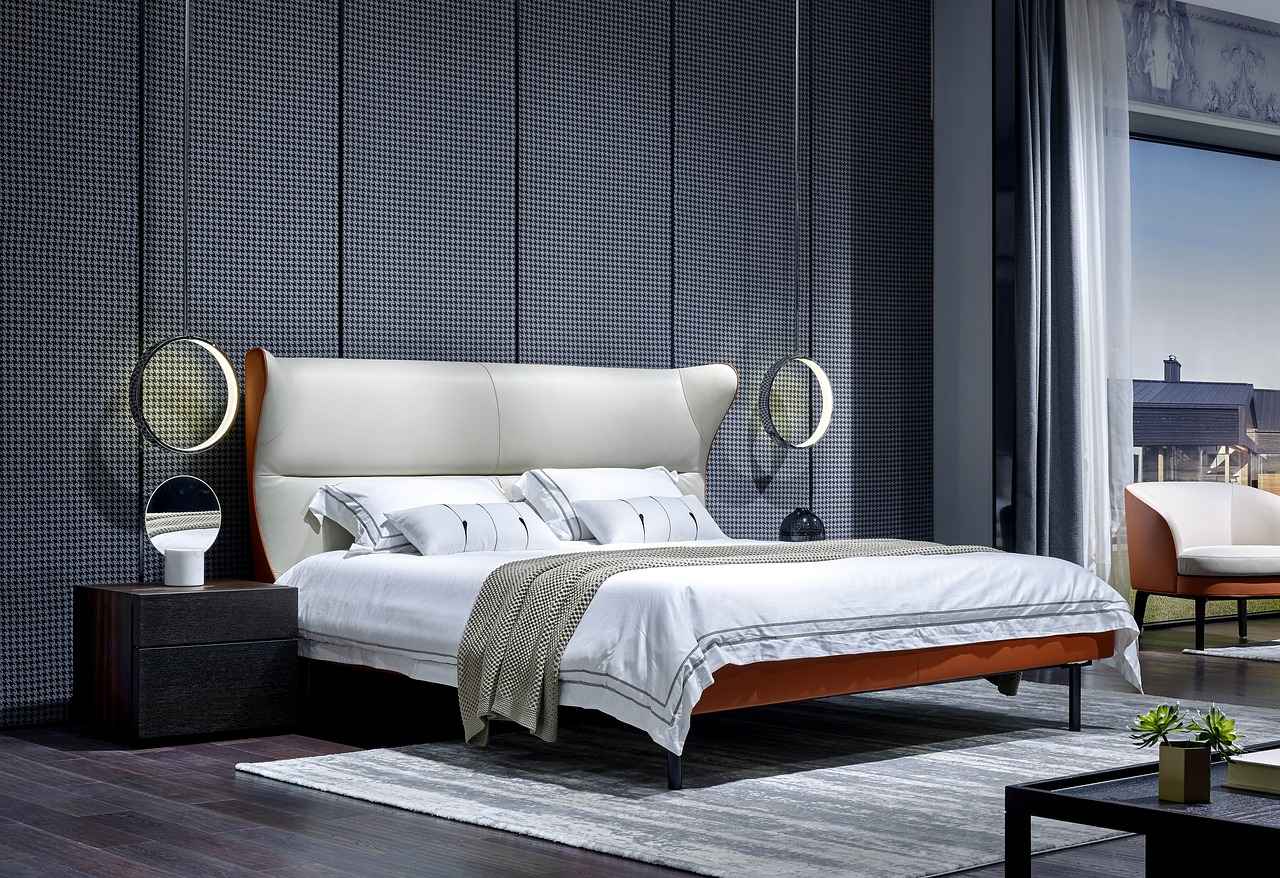
Smart Bed Technology
The world of sleep is undergoing a remarkable transformation, thanks to the integration of smart technology in bed design. This evolution is not merely about aesthetics; it encompasses a range of features that significantly enhance comfort, convenience, and overall sleep quality. As we delve into the specifics of smart bed technology, it becomes clear that these innovations are reshaping our nightly routines and improving our health.
Smart bed technology refers to the incorporation of advanced features that adapt to the user’s needs. This includes everything from temperature control to sleep tracking. These beds are designed to create a personalized sleeping environment, ultimately leading to better rest and recovery.
One of the most significant advancements in smart bed technology is the rise of adjustable bed frames. These frames allow users to modify their sleeping position with a simple touch of a button. This feature proves particularly beneficial for individuals with specific health concerns, such as sleep apnea or back pain. By elevating the head or feet, users can find their ideal position, enhancing both comfort and support.
Another remarkable aspect of smart beds is their ability to monitor sleep patterns through embedded sleep tracking technology. This feature provides users with valuable insights into their sleep quality, including duration, interruptions, and overall restfulness. By analyzing this data, individuals can make informed decisions about their sleep habits, ultimately leading to improved health and well-being.
Temperature regulation is crucial for a good night’s sleep. Smart beds equipped with temperature control systems allow users to adjust the warmth or coolness of their sleeping surface. This feature can be particularly advantageous for couples who have differing temperature preferences, ensuring that both partners can enjoy a comfortable sleep environment.
Modern smart beds are often compatible with various smart home systems, allowing users to control their bed settings through voice commands or mobile apps. This integration extends to features such as lighting, sound, and even alarm systems, creating a cohesive and user-friendly sleep experience. For instance, users can program their bed to gradually raise in the morning, simulating a natural sunrise, which can help ease the waking process.
Some advanced smart beds come equipped with health monitoring capabilities, tracking vital signs like heart rate and breathing patterns. In cases where irregularities are detected, the bed can send alerts to the user or even notify healthcare providers. This feature adds a layer of safety, particularly for elderly users or those with pre-existing health conditions.
Smart bed technology also emphasizes customization. Many models allow users to adjust firmness levels, pillow heights, and even mattress materials to suit their personal preferences. This level of personalization ensures that each individual can create their perfect sleep sanctuary, tailored to their unique needs.
As technology continues to advance, we can expect even more innovative features in smart bed design. Future developments may include enhanced artificial intelligence, which can learn from user behavior and automatically adjust settings for optimal sleep. Additionally, the integration of more comprehensive health monitoring features could revolutionize how we approach sleep and wellness.
In conclusion, the integration of smart technology in bed design is not just a trend; it represents a significant shift in how we approach sleep. By enhancing comfort, convenience, and overall sleep quality, these innovations are paving the way for a healthier, more restful future.
Adjustable Bed Frames
are rapidly gaining traction in the world of sleep technology, revolutionizing the way individuals experience rest. These innovative frames allow users to modify their sleeping positions, providing personalized comfort and support tailored to individual needs. This adaptability is particularly beneficial for those with specific health concerns, such as chronic pain, acid reflux, or sleep apnea. By elevating the head or feet, users can alleviate discomfort and promote better circulation, enhancing overall sleep quality.
The versatility of adjustable bed frames offers numerous health benefits. Many users report significant improvements in their sleep quality, as these beds can help reduce snoring, alleviate back pain, and even improve digestion. The ability to find a comfortable position can be life-changing for those suffering from conditions like arthritis or fibromyalgia, where traditional flat mattresses may exacerbate discomfort.
In addition to health benefits, adjustable bed frames provide an enhanced sleep experience. Many models come equipped with features such as massage functions, temperature control, and integrated lighting. These features not only promote relaxation but also create a more inviting sleeping environment. Users can enjoy a gentle massage while drifting off to sleep, which can help reduce stress and tension accumulated throughout the day.
With the rise of smart home technology, many adjustable bed frames now integrate seamlessly with other smart devices. This allows users to control their bed settings through smartphone apps or voice commands, making it easier to adjust positions without leaving the comfort of their sheets. Some advanced models even come with built-in sleep tracking capabilities, providing insights into sleep patterns and suggesting adjustments for better rest.
While functionality is key, adjustable bed frames are also designed with aesthetics in mind. Contemporary designs feature sleek lines and a variety of upholstery options, allowing them to blend seamlessly with any bedroom decor. Users can choose from a range of colors and materials, ensuring that their adjustable bed frame complements their personal style.
- Size: Ensure the frame fits your mattress size and bedroom space.
- Weight Capacity: Check the weight limit to ensure it meets your needs.
- Warranty: Look for a warranty that covers parts and labor for peace of mind.
- Features: Consider which features are most important to you, such as massage options or smart technology.
In summary, adjustable bed frames offer a multitude of benefits that cater to modern sleep needs. Their ability to adapt to individual preferences not only enhances comfort but also addresses specific health concerns, making them a valuable investment for anyone looking to improve their sleep quality. As technology continues to evolve, these frames are likely to become even more sophisticated, further enhancing the sleep experience for users around the globe.
Smart Sleep Trackers
As we move into 2025, the realm of sleep technology is rapidly evolving, with at the forefront of this transformation. These innovative devices, embedded within bed designs, are not just gadgets but essential tools that empower users to take charge of their sleep health. By monitoring various sleep parameters, they provide invaluable insights that can lead to improved sleep quality and overall well-being.
One of the most significant advantages of smart sleep trackers is their ability to analyze sleep patterns. By collecting data on sleep duration, quality, and stages, users can gain a comprehensive understanding of their sleep habits. This information is crucial, as it can highlight potential issues such as sleep apnea or insomnia, allowing individuals to seek appropriate interventions. With features like heart rate monitoring and breathing analysis, these trackers offer a holistic view of one’s health during sleep.
Furthermore, many smart sleep trackers come equipped with sleep coaching features. These personalized recommendations are based on the data collected, guiding users on how to improve their sleep hygiene. For instance, if a user struggles with falling asleep, the tracker may suggest a specific bedtime routine or relaxation techniques to enhance sleep onset. This tailored approach makes sleep improvement accessible and achievable.
Another exciting aspect of smart sleep technology is its integration with other smart home devices. Imagine a bedroom where your smart lights dim automatically as you prepare for sleep, or your thermostat adjusts to a cooler temperature based on your sleep stage. This seamless integration not only enhances comfort but also creates an environment conducive to restful sleep.
Moreover, the user-friendly interfaces of these devices make it easy for anyone to engage with their sleep data. Many trackers offer mobile applications that display sleep metrics in a visually appealing and understandable format. Users can track their progress over time, set goals, and even share their data with healthcare providers, fostering a collaborative approach to health management.
In addition to improving individual sleep quality, smart sleep trackers contribute to broader health trends. As awareness of sleep’s impact on physical and mental health grows, these technologies are becoming vital tools in preventive healthcare. They empower users to recognize the importance of sleep in their overall health journey, encouraging lifestyle changes that promote better sleep habits.
Despite the many benefits, it’s essential to approach smart sleep trackers with a balanced perspective. While they can provide valuable insights, they should not replace professional medical advice. Users experiencing significant sleep issues should consult healthcare professionals to discuss their findings and explore potential treatment options.
As we look ahead to 2025, the future of smart sleep tracking technology is bright. With ongoing advancements in artificial intelligence and machine learning, we can expect even more sophisticated features that will continue to enhance our understanding of sleep. From personalized sleep environments to deeper health insights, the potential for these technologies to revolutionize our approach to sleep is immense.
In conclusion, smart sleep trackers are not just a trend; they represent a significant shift in how we understand and prioritize sleep. By offering detailed insights, personalized recommendations, and integration with smart home systems, they empower users to take control of their sleep health and ultimately improve their quality of life.
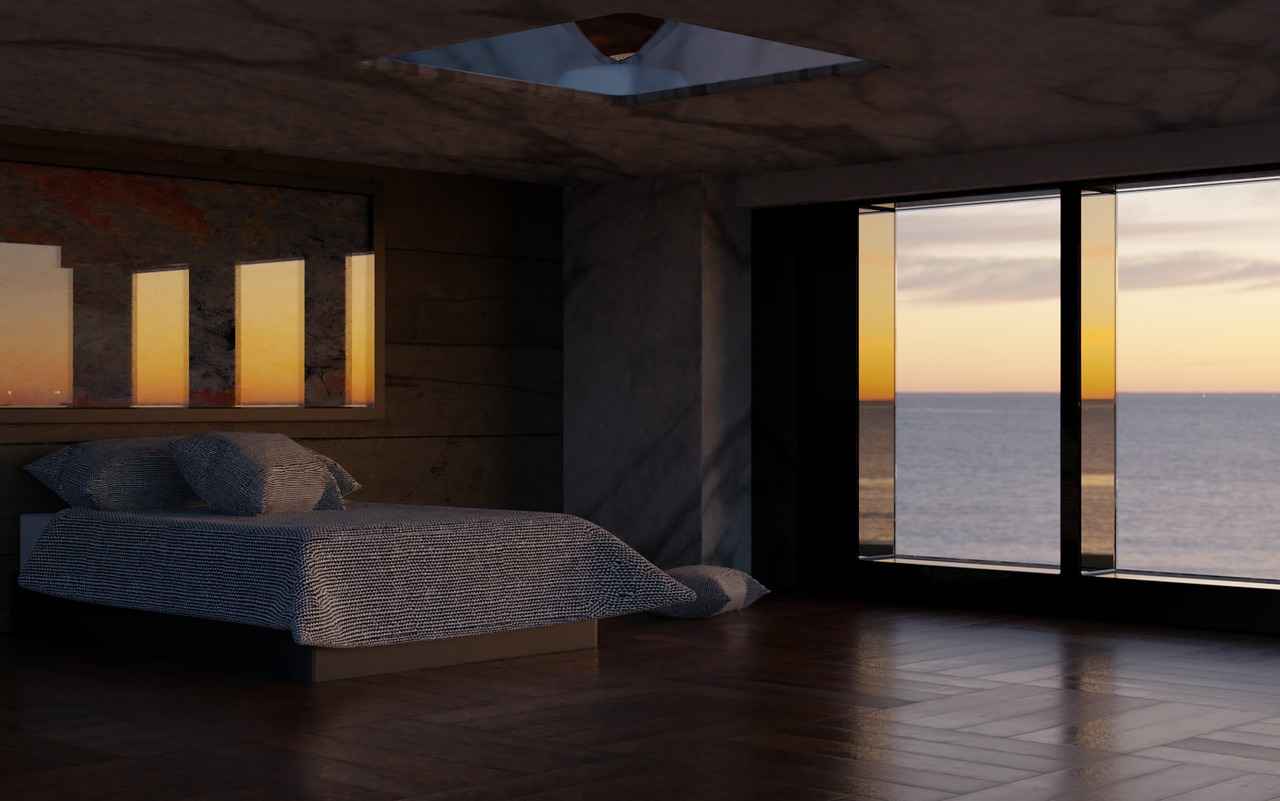
Textured Fabrics and Upholstery
Textured fabrics are rapidly becoming a significant trend in bed design, transforming the way we perceive comfort and style in our bedrooms. As we move into 2025, the integration of various textures not only adds visual interest but also allows for a deeper level of personalization in bedroom aesthetics.
One of the standout features of textured fabrics is their ability to create an inviting atmosphere. By incorporating materials such as velvet, linen, and boucle, homeowners can enhance the tactile experience of their beds. These fabrics not only look luxurious but also feel sumptuous against the skin, inviting relaxation and comfort. Velvet, with its rich, plush surface, brings a sense of opulence, while linen offers a more casual, breathable option that is perfect for warmer climates.
Layering different textures is a popular technique that can significantly elevate the overall design of a bedroom. By combining various fabrics such as soft throws, patterned cushions, and textured bed linens, you can create a rich, inviting atmosphere. This layering approach not only adds depth to the design but also allows homeowners to express their personal style. For instance, pairing a velvet duvet cover with cotton or linen sheets can create a visually appealing contrast that is both stylish and comfortable.
In addition to texture, the choice of color plays a crucial role in bed design. Textured fabrics can be found in a myriad of colors, allowing for endless combinations that can either complement or contrast with existing decor. Neutral tones, such as beiges and grays, can provide a calming backdrop, while bold colors can serve as statement pieces that energize the space. Mixing textures and colors not only enhances visual interest but also reflects the personality of the homeowner.
When selecting textured fabrics for bed design, it is essential to consider practicality alongside aesthetics. Fabrics such as microfiber and synthetics offer durability and ease of maintenance, making them ideal for everyday use. Additionally, opting for machine-washable materials can save time and effort in upkeep, ensuring that your bedroom remains a sanctuary of comfort and style.
The trend of textured upholstery extends beyond bedding to include bed frames themselves. Upholstered bed frames in rich fabrics can serve as focal points in the bedroom, seamlessly blending functionality with style. Textured upholstery not only enhances the visual appeal of the bed but also provides added comfort when sitting up in bed, making it a practical choice for reading or relaxing.
To achieve a cohesive look in the bedroom, consider the overall design scheme when incorporating textured fabrics. Coordinating textures with other elements in the room, such as curtains, rugs, and wall art, can create a harmonious environment. For example, if your bed features a textured upholstered headboard, you might choose curtains in a similar fabric or color to tie the room together.
Textured fabrics are undoubtedly shaping the future of bed design, offering a unique blend of comfort, style, and personalization. As we embrace these trends in 2025, the incorporation of various textures will continue to enhance the overall aesthetic of our bedrooms, making them more inviting and reflective of our individual tastes.
Velvet and Linen Upholstery
When it comes to bed upholstery, the choice of fabric can significantly influence both the aesthetic appeal and the comfort of your bedroom. Among the myriad of options available, velvet and linen stand out as two of the most favored materials for their luxurious textures and versatile qualities. In this section, we will delve deeper into why these fabrics are trending in bed design for 2025 and how they can enhance your sleeping environment.
Velvet is synonymous with luxury and sophistication. Its soft, plush texture not only adds a touch of elegance to any bedroom but also provides a cozy feel that is perfect for relaxation. Available in a wide range of colors, velvet can complement various design themes, from contemporary to classic.
- Visual Appeal: The rich depth of color and sheen of velvet can elevate the overall look of your bed, making it a focal point in the room.
- Comfort: The soft surface of velvet is gentle against the skin, making it an ideal choice for those who prioritize comfort.
- Durability: High-quality velvet is resilient and can withstand wear and tear, making it a practical choice for everyday use.
On the other hand, linen is celebrated for its breathability and natural texture. Made from the fibers of the flax plant, linen is not only eco-friendly but also offers a unique aesthetic that is both casual and chic.
- Temperature Regulation: Linen’s natural properties allow it to wick moisture away, keeping you cool in the summer and warm in the winter.
- Timeless Appeal: The understated elegance of linen brings a relaxed vibe to the bedroom, making it suitable for various interior styles.
- Easy Maintenance: Linen becomes softer with each wash, and its natural wrinkles add to its charm, requiring minimal upkeep.
For those looking to create a distinctive bedroom aesthetic, consider combining both velvet and linen in your bed design. Layering these two fabrics can add depth and dimension to your bedding ensemble. For instance, a velvet headboard paired with linen sheets can create a stunning contrast that is visually appealing yet comfortable.
Incorporating various textures not only enhances the visual interest of your bedroom but also allows for personalization. By mixing velvet and linen, homeowners can achieve a sophisticated yet inviting atmosphere. For example, using velvet cushions on a linen duvet can create a harmonious balance that feels both luxurious and cozy.
In summary, velvet and linen are exceptional choices for bed upholstery in 2025, each offering unique benefits that cater to modern lifestyles. Whether you gravitate towards the opulence of velvet or the natural charm of linen, these fabrics can transform your bedroom into a sanctuary of comfort and style. Embrace the latest trends in bed design by incorporating these luxurious materials into your home.
Layering Textures for Depth
In the realm of interior design, the concept of layering textures has emerged as a powerful tool for creating depth and visual interest in spaces, particularly in bedding and upholstery. This technique not only enhances the aesthetic appeal of a room but also invites a sense of warmth and comfort, making it an essential element for modern homes.
When it comes to bedding, the combination of various fabrics can transform a simple bed into a stunning focal point. By mixing materials such as cotton, linen, velvet, and faux fur, homeowners can achieve a rich tapestry of textures that captivates the eye. For instance, a soft cotton sheet can be paired with a plush velvet throw and a chunky knit blanket, creating a cozy and inviting atmosphere. This not only adds visual appeal but also allows for a tactile experience that can enhance relaxation.
In upholstery, the same principles apply. Sofas and chairs adorned with different textured fabrics can create a layered look that feels both sophisticated and inviting. Consider a living room where a leather sofa is complemented by velvet cushions and a woven throw. This combination not only showcases personal style but also encourages a sense of comfort and warmth, inviting guests to sit and relax.
Moreover, layering textures can serve as a means of self-expression. Homeowners can curate their spaces to reflect their personalities by selecting fabrics and colors that resonate with them. For example, a bohemian style may incorporate an array of patterned textiles, while a more minimalist approach might favor a monochromatic palette with varying textures. This versatility allows for endless possibilities in design, making it easier for individuals to create a space that feels uniquely theirs.
Another benefit of layering textures is the ability to maintain a cohesive look while introducing various elements. By sticking to a common color palette or theme, different textures can work harmoniously together. For example, a room featuring earthy tones can include a jute rug, linen curtains, and a velvet bedspread, all of which contribute to a unified aesthetic without overwhelming the senses.
Additionally, layering textures can enhance the functionality of a space. In colder climates, incorporating heavier fabrics like wool or fleece can provide warmth, while lighter fabrics can be used in warmer months to keep the space feeling fresh and airy. This adaptability not only makes a home more comfortable but also allows for seasonal changes in decor without a complete overhaul.
As trends continue to evolve, the emphasis on layering textures is likely to remain a staple in interior design. Homeowners are increasingly looking for ways to personalize their spaces while ensuring comfort and style. By embracing this technique, they can create inviting atmospheres that reflect their unique tastes and lifestyles.
In conclusion, layering different textures in bedding and upholstery is an effective way to create depth and richness in interior spaces. It allows for personal expression while fostering a sense of warmth and comfort, making it a timeless design principle that will continue to resonate in homes for years to come.

Bold Color Palettes
As we step into 2025, the world of interior design is witnessing a significant shift, particularly in bed design. One of the most exciting trends is the use of . This movement marks a departure from the traditional reliance on neutral tones, as designers and homeowners alike embrace vibrant hues that not only beautify spaces but also reflect individual personality and creativity.
Bold colors are more than just a trend; they represent a statement of self-expression. In an era where personal style is paramount, incorporating bright and lively colors into bed design allows individuals to create a sanctuary that resonates with their unique tastes. From deep blues and rich greens to fiery reds and sunny yellows, the spectrum of colors available is vast, giving homeowners the freedom to experiment.
One way to incorporate bold colors is through accent colors in bed frames. A vibrant bed frame can serve as the focal point of the bedroom, drawing attention and creating a lively atmosphere. For instance, a striking teal frame paired with neutral bedding can create a stunning contrast, energizing the entire space.
Another popular approach is mixing patterns and colors in bedding and decor. This trend encourages creativity, allowing homeowners to combine various textures and hues to craft a dynamic and inviting environment. For example, pairing floral patterned sheets with geometric print pillows can add depth and interest, making the bedroom feel both personalized and fresh.
While bold colors can invigorate a space, achieving a cohesive look is crucial. Homeowners are encouraged to choose a color scheme that complements the overall design of the room. Utilizing a color wheel can help in selecting complementary shades that harmonize, ensuring that the bedroom remains a tranquil retreat despite the vibrant colors.
Accessories play a vital role in the bold color trend. Items such as throw pillows, blankets, and wall art can be easily swapped out to refresh the look of the bedroom. This flexibility allows for seasonal updates or simply a change to match evolving tastes without the need for a complete redesign.
It’s important to consider the psychological effects of color when designing a bedroom. Colors can evoke different emotions and moods. For instance, blue is often associated with calmness, while yellow can stimulate feelings of happiness and energy. Understanding these effects can guide homeowners in selecting colors that not only enhance the aesthetic appeal but also contribute to a positive atmosphere.
As we look ahead to 2025, the trend of bold color palettes in bed design is set to redefine how we perceive and utilize our sleeping spaces. By embracing vibrant hues, mixing patterns, and considering the psychological impact of colors, homeowners can create a bedroom that is not only visually stunning but also a true reflection of their individuality.
Accent Colors in Bed Frames
In the realm of modern interior design, the choice of bed frame can significantly influence the overall ambiance of a bedroom. One of the most exciting trends emerging in 2025 is the use of accent colors in bed frames, which not only serve as a focal point but also allow for playful combinations that can energize the space. The incorporation of vibrant hues and unique color palettes adds a sense of personality and creativity, making the bedroom a true reflection of individual style.
The use of accent colors in bed frames is not just about aesthetics; it also plays a crucial role in setting the mood for the entire room. For instance, a bold red or deep blue frame can create a striking contrast against neutral walls, drawing the eye and serving as a conversation starter. This approach encourages homeowners to experiment with color, moving away from the traditional, subdued tones that have dominated bedroom designs in the past.
Moreover, accent colors can be harmoniously paired with other elements in the room to create a cohesive look. Consider using a color wheel to find complementary shades that enhance the bed frame’s color. For instance, a mustard yellow bed frame can be paired with navy blue bedding and soft gray pillows, creating a balanced and inviting atmosphere. This method not only adds depth to the design but also allows for easy updates as trends change.
Another exciting aspect of using accent colors in bed frames is the opportunity for personal expression. Homeowners can choose colors that resonate with their personalities or evoke specific emotions. A calming green frame may promote relaxation, while a vibrant orange can energize the space. This personalization is essential in creating a sanctuary that feels uniquely yours.
In addition to color selection, the material of the bed frame can also impact how the accent colors are perceived. For example, a wooden frame painted in a bold hue can add warmth and texture, while a metal frame might convey a more modern and sleek aesthetic. Each material interacts differently with color, influencing the overall vibe of the bedroom.
When selecting an accent color, it’s essential to consider the lighting in the bedroom. Natural light can alter the perception of color throughout the day, making a once vibrant hue appear muted in the evening. Therefore, testing paint samples or fabric swatches in various lighting conditions can help ensure the chosen color achieves the desired effect.
Furthermore, the trend of mixing patterns and colors in bedding and decor complements the use of accent colors in bed frames. Layering different patterns can add a dynamic element to the bedroom, encouraging a personal touch while keeping the design fresh and exciting. For example, pairing a striped duvet cover with a floral throw pillow can create a visually engaging space that feels curated and thoughtful.
Ultimately, the incorporation of accent colors in bed frames contributes to a broader trend of embracing individuality and creativity in home design. As we move into 2025, this approach not only allows for playful combinations but also energizes the space, transforming the bedroom into a haven that reflects personal style and taste.
Mixing Patterns and Colors
In the realm of interior design, particularly in the bedroom, has emerged as a captivating trend that breathes life into personal spaces. This approach not only enhances the visual appeal of the room but also allows individuals to express their unique style and personality. By skillfully combining various textiles, hues, and designs, homeowners can create an atmosphere that feels both dynamic and inviting.
One of the most exciting aspects of this trend is the ability to play with contrasting patterns. For instance, pairing bold geometric prints with softer floral designs can establish a striking balance that draws the eye. To achieve this, consider using a neutral base for larger items, such as bedspreads or curtains, and then layer in vibrant accent pillows or throws featuring bolder patterns. This technique adds depth and interest without overwhelming the senses.
When it comes to color, the current trend leans towards embracing vibrant palettes. Gone are the days when bedrooms were limited to muted tones. Instead, homeowners are encouraged to explore rich jewel tones, bright pastels, or even unexpected color combinations. For example, a deep emerald green can be beautifully complemented by soft blush pinks, creating a harmonious yet lively atmosphere. Utilizing a color wheel can assist in selecting complementary colors that enhance the overall aesthetic.
Incorporating textured fabrics is another effective way to mix patterns and colors. Textures such as velvet, linen, or knitted materials can add a layer of complexity to the design. For instance, a velvet bedspread paired with linen pillows and a knitted throw can create a cozy, inviting look. This layering of different textures not only adds visual interest but also enhances comfort, making the bed a true sanctuary.
Additionally, don’t shy away from experimenting with wall art and decor. Artwork can serve as a focal point in the room, allowing for further exploration of patterns and colors. A large abstract painting can tie together various elements in the room, while smaller pieces can be grouped in a gallery wall format, showcasing a mix of designs. Incorporating decorative items such as vases, books, or plants can also introduce new colors and textures, enriching the overall design.
For those who may feel hesitant about mixing patterns and colors, starting small can be an effective strategy. Begin with a few accent pieces, such as throw pillows or a patterned blanket, and gradually build upon that foundation. This method allows for a more controlled approach to design, enabling homeowners to gauge their comfort level with bolder choices.
Ultimately, mixing patterns and colors in bedding and decor is about creating a space that reflects personal style and evokes a sense of joy. It encourages creativity and experimentation, allowing individuals to craft their own unique sanctuary. Whether opting for a maximalist approach or a more restrained mix, the key is to maintain a sense of balance and cohesion throughout the design.
In conclusion, the art of mixing patterns and colors in bedroom decor is a powerful tool for transforming a space into a vibrant and personalized haven. By embracing this trend, homeowners can create a bedroom that not only looks stunning but also feels uniquely theirs.
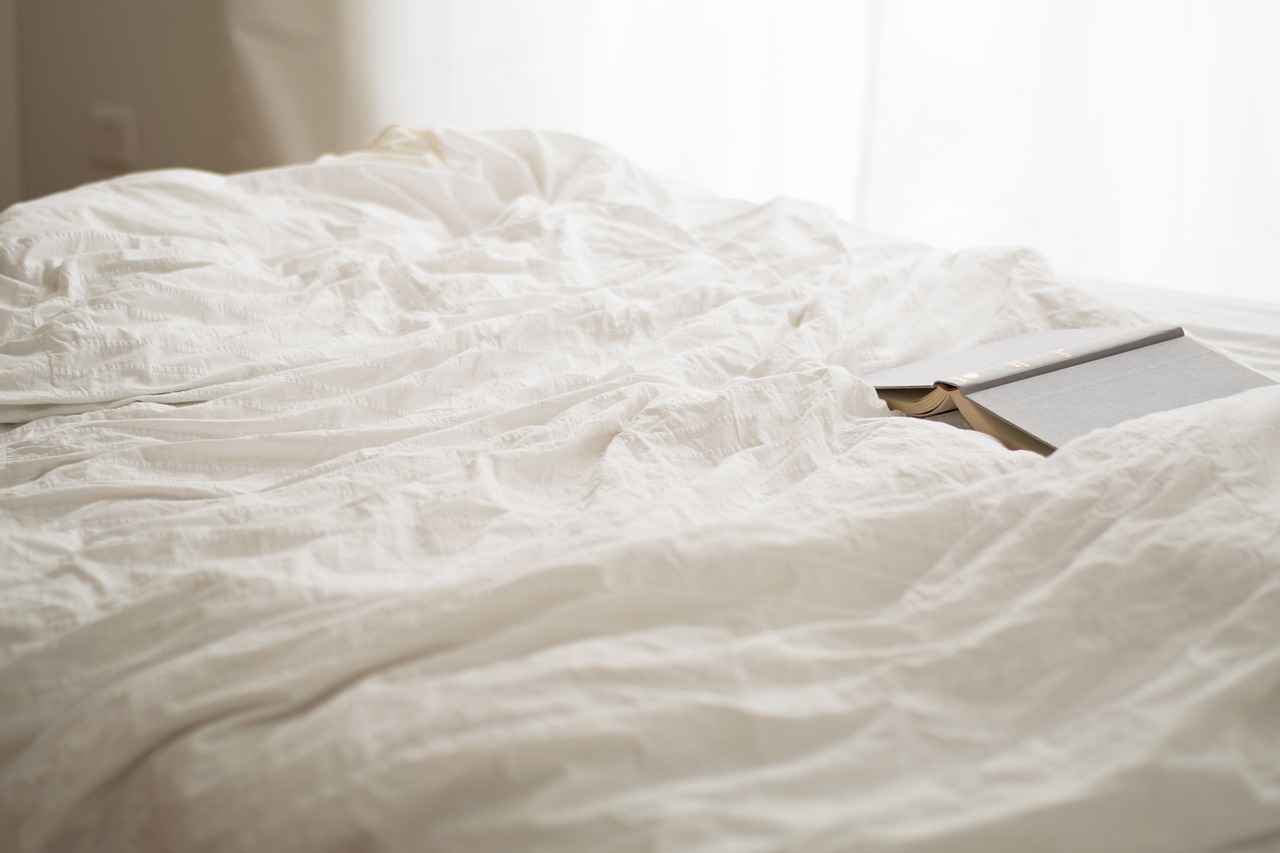
Multi-Functional Beds
are increasingly becoming a cornerstone of modern interior design, particularly in urban settings where space is at a premium. These innovative pieces not only offer practical solutions for small living areas but also enhance the overall aesthetic of the bedroom. As we look forward to 2025, the demand for beds that combine style with functionality is set to rise, reflecting the evolving needs of contemporary lifestyles.
With the trend towards smaller living spaces, multi-functional beds are designed to maximize utility without compromising on style. These beds often feature built-in storage compartments, allowing homeowners to keep their bedrooms organized and clutter-free. For instance, beds with drawers or lift-up mechanisms can efficiently store bedding, clothing, or other personal items, making them ideal for studio apartments or shared living spaces.
Another popular option is the convertible bed, which transforms to serve multiple purposes. Sofa beds and Murphy beds are excellent examples of this trend. They can be easily converted from a sleeping area to a functional living space, accommodating guests without requiring additional rooms. This versatility makes them a practical choice for those who entertain frequently or need to optimize their living areas.
While functionality is key, modern multi-functional beds also prioritize style and comfort. Many designs incorporate high-quality materials and elegant finishes, ensuring that they complement the overall décor of the bedroom. For example, upholstered beds with chic fabrics can add a touch of luxury while still serving practical purposes.
As technology advances, smart features are increasingly integrated into multi-functional beds. These innovations include adjustable frames that allow users to customize their sleeping positions for optimal comfort. Additionally, some beds come equipped with smart sleep tracking technology, providing insights into sleep patterns and helping users improve their sleep quality.
Incorporating effective storage solutions is essential for maintaining an organized bedroom. Multi-functional beds can include hidden compartments, under-bed storage, and integrated shelving, providing ample space for books, accessories, and other essentials. This not only helps in keeping the bedroom tidy but also makes the most of every inch of space.
One of the most appealing aspects of multi-functional beds is their customizability. Homeowners can choose from various designs, colors, and materials to ensure their bed fits perfectly within their personal style and space constraints. Whether opting for a minimalist design or a bold statement piece, the range of choices available allows for personalized expression.
As sustainability continues to be a priority for many consumers, eco-friendly multi-functional beds are gaining traction. Manufacturers are increasingly using sustainable materials, such as reclaimed wood or bamboo, to create stylish and environmentally responsible designs. This not only reduces the ecological footprint but also appeals to the growing demographic of eco-conscious buyers.
In summary, multi-functional beds are redefining modern living by providing essential solutions for space optimization without sacrificing aesthetic appeal. As we move into 2025, the combination of innovative design, smart technology, and customizable options will ensure that these beds remain a staple in contemporary home design. By embracing these trends, homeowners can create functional, stylish, and organized living environments that cater to their unique needs.
Storage Solutions in Bed Design
In the ever-evolving world of interior design, have emerged as a crucial aspect of modern living. As urban spaces become smaller and the demand for functionality increases, beds with built-in storage are not just a trend but a necessity. These innovative designs offer a seamless blend of practicality and aesthetics, ensuring that your bedroom remains a sanctuary of peace and organization.
- Maximized Space: One of the most significant advantages of beds with built-in storage is their ability to maximize space. Whether you live in a compact apartment or a spacious home, these beds provide ample storage for linens, clothing, and other personal items, reducing clutter in your bedroom.
- Enhanced Organization: With designated storage areas, it becomes easier to keep your belongings organized. No more rummaging through drawers or closets; everything you need is within arm’s reach, neatly tucked away beneath your bed.
- Versatile Designs: Modern storage beds come in various styles, from contemporary to traditional, ensuring that they can complement any bedroom decor. This versatility allows homeowners to maintain their unique aesthetic while benefiting from functional design.
There are several types of storage solutions available in bed designs today, catering to different needs and preferences:
- Under-Bed Drawers: These are built directly into the frame of the bed, offering easy access to your items. They are perfect for storing seasonal clothing or extra bedding.
- Lifting Mechanism Beds: These beds feature a hydraulic lift system that raises the mattress, revealing a spacious storage compartment underneath. This design is ideal for those who need to store larger items, such as suitcases or blankets.
- Headboard Storage: Some beds come with built-in shelves or compartments in the headboard, providing additional space for books, decorative items, or alarm clocks, keeping essentials close at hand.
When selecting a storage bed, consider the following factors:
- Size: Ensure that the bed fits comfortably in your space while providing enough storage capacity for your needs.
- Material: Look for durable materials that can withstand daily use. Solid wood frames are often preferred for their longevity and stability.
- Style: Choose a design that complements your existing decor. Whether you prefer a minimalist look or a more ornate style, there are plenty of options available.
To ensure the longevity of your storage bed, regular maintenance is essential. Here are some tips:
- Check the drawer slides and lifting mechanisms periodically for smooth operation.- Keep the storage area clean and organized to prevent dust buildup.- Rotate your mattress regularly to maintain its shape and comfort.
In conclusion, beds with built-in storage solutions are a smart investment for anyone looking to enhance their bedroom’s functionality. They not only provide ample space for belongings but also contribute to a clean and organized environment. As we continue to embrace modern living, the integration of these practical designs will undoubtedly play a pivotal role in shaping our homes.
Convertible Bed Designs
have become a cornerstone of modern interior design, particularly in urban environments where space is a premium. These innovative solutions, including sofa beds and Murphy beds, offer exceptional versatility, allowing homeowners to maximize their living areas without compromising on style or comfort.
As urban living spaces continue to shrink, the demand for multi-functional furniture has surged. Convertible beds not only serve as a place to sleep but can also transform into comfortable seating or be neatly stowed away when not in use. This adaptability is crucial for individuals living in studio apartments or smaller homes, where every square foot counts.
- Sofa Beds: Ideal for entertaining guests, sofa beds seamlessly blend into your living space while providing an extra sleeping option.
- Murphy Beds: These wall-mounted beds fold away during the day, freeing up valuable floor space for other activities.
- Futon Beds: A classic choice, futons can easily transition from a couch to a bed, offering flexibility for various needs.
One of the key advantages of convertible bed designs is their ability to enhance functionality without sacrificing aesthetics. Many modern designs incorporate sleek lines and contemporary materials, ensuring they fit beautifully into any decor. For instance, a stylish Murphy bed can be designed to look like a chic cabinet, blending seamlessly with your home’s interior.
Moreover, convertible beds often come equipped with additional features that enhance their usability. Some models include built-in storage compartments, allowing users to store bedding, pillows, or even clothing, further maximizing the utility of their living space. This is especially beneficial in smaller homes where storage options are limited.
In addition to practical benefits, convertible beds are also evolving in terms of design and materials. Manufacturers are increasingly using sustainable materials, aligning with the growing trend of eco-friendly living. Bamboo and recycled wood are becoming popular choices, offering durability and a unique aesthetic while minimizing environmental impact.
Furthermore, the rise of smart technology is influencing convertible bed designs. Many modern options now include features such as adjustable frames and integrated sleep tracking systems, allowing users to customize their sleeping experience. This integration of technology not only enhances comfort but also promotes better sleep hygiene, catering to the needs of health-conscious individuals.
As we look towards 2025, the trend of convertible bed designs is expected to continue evolving. With a focus on minimalism and sustainability, future designs will likely prioritize clean lines and eco-friendly materials, making them even more appealing to consumers. The ability to transform a space quickly and effortlessly will remain a significant selling point, particularly for those living in urban settings.
In conclusion, convertible bed designs are not just a passing trend; they represent a fundamental shift in how we utilize our living spaces. By combining functionality with style, these innovative solutions are set to define the future of bedroom and living room designs, proving that you can have both comfort and practicality in one versatile piece of furniture.
Frequently Asked Questions
- What are the latest trends in bed design for 2025?
The latest trends in bed design for 2025 focus on modern aesthetics, functionality, and sustainability. Expect to see minimalist designs, eco-friendly materials like recycled wood and bamboo, and innovative technologies like adjustable frames and smart sleep trackers.
- How do minimalist bed designs promote tranquility?
Minimalist bed designs emphasize clean lines and simple forms, creating a clutter-free environment that fosters a sense of calm and serenity. This style helps to reduce distractions, allowing for a more peaceful sleeping space.
- What are the benefits of using sustainable materials in bed design?
Sustainable materials, such as reclaimed wood and bamboo, not only reduce environmental impact but also add unique character to your bed. They align with eco-conscious living, ensuring that your bedroom is both stylish and responsible.
- How can smart technology enhance my sleep experience?
Smart technology, like adjustable bed frames and sleep trackers, allows for personalized comfort and valuable insights into your sleep patterns. This can lead to improved sleep quality and overall well-being.
- What role do textured fabrics play in bed design?
Textured fabrics add visual interest and comfort to bed designs. By layering different materials like velvet and linen, you can create a rich, inviting atmosphere that reflects your personal style.
- How can I incorporate bold colors into my bedroom?
Incorporating bold colors can be done through accent pieces like bed frames or bedding. Mixing patterns and colors adds a dynamic element to your space, making it feel lively and unique.
- What are the advantages of multi-functional beds?
Multi-functional beds are ideal for maximizing space in smaller living areas. Features like built-in storage or convertible designs help keep your bedroom organized while providing versatility for various needs.
